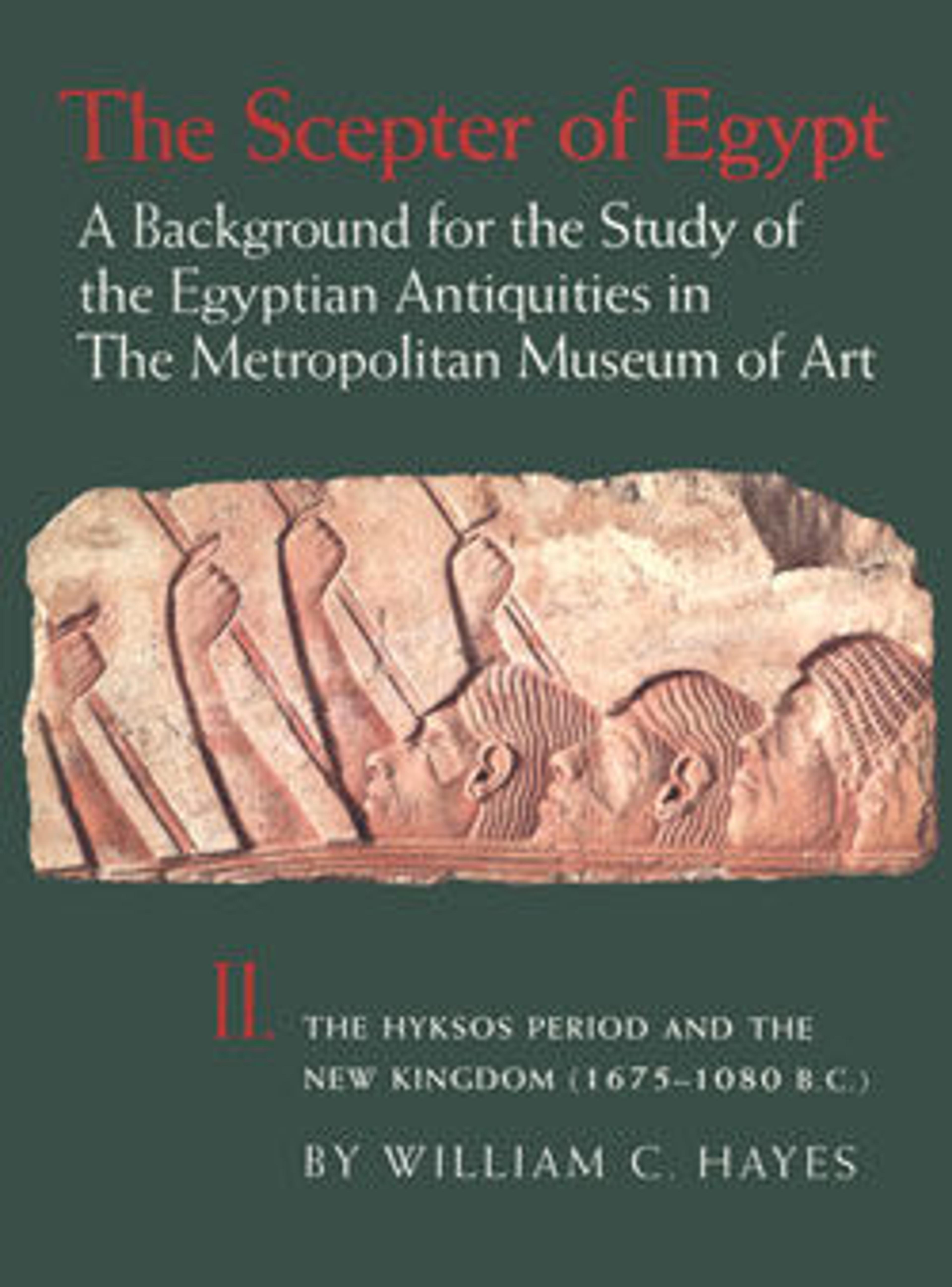Lid of Coffin
The lid of a child's coffin, this was found in a badly-disturbed pit-tomb (MMA 1031) south of the temples at Deir el-Bahri. Although this valley was apparently first used as a necropolis in early Dynasty 12, when Amenemehat I chose it for his temple and tomb, many of the objects recovered by the Museum's Egyptian Expedition date from the secondary use of the area in Dynasty 17 and early Dynasty 18.
The folded wings that embrace the lower body of the deceased identify this as a variation on the rishi (feathered) coffin-type, dating the piece to the late 17th or early 18th Dynasty. The Hathor-style wig (long locks with an outward curl at the end) in blue and yellow stripes and the large ears evoke the style of the Middle Kingdom. In addition to the wig, the child wears a broad festival collar and cuff bracelets. The wings are green and white, with details picked out in black, white, and red. Her body is yellow (the color used for female skin), and the inscription down the center of her body asks that offerings be given to her by the king through the offices of the mortuary gods Ptah-Sokar and Osiris. Unfortunately, the extended foot is broken off just where the owner's name would have been written.
The folded wings that embrace the lower body of the deceased identify this as a variation on the rishi (feathered) coffin-type, dating the piece to the late 17th or early 18th Dynasty. The Hathor-style wig (long locks with an outward curl at the end) in blue and yellow stripes and the large ears evoke the style of the Middle Kingdom. In addition to the wig, the child wears a broad festival collar and cuff bracelets. The wings are green and white, with details picked out in black, white, and red. Her body is yellow (the color used for female skin), and the inscription down the center of her body asks that offerings be given to her by the king through the offices of the mortuary gods Ptah-Sokar and Osiris. Unfortunately, the extended foot is broken off just where the owner's name would have been written.
Artwork Details
- Title: Lid of Coffin
- Period: Second Intermediate Period–Early New Kingdom
- Dynasty: Dynasty 17–18
- Date: ca. 1580–1479 B.C.
- Geography: From Egypt, Upper Egypt, Thebes, Southern Asasif, unfinished temple area, Tomb MMA 1013, in rubbish at mouth of pit, MMA excavations, 1921–22
- Medium: Wood (Abies sp. or Cedrus sp.)
- Dimensions: L. 117 cm (46 1/16 in.)
- Credit Line: Rogers Fund, 1923
- Object Number: 23.3.461
- Curatorial Department: Egyptian Art
More Artwork
Research Resources
The Met provides unparalleled resources for research and welcomes an international community of students and scholars. The Met's Open Access API is where creators and researchers can connect to the The Met collection. Open Access data and public domain images are available for unrestricted commercial and noncommercial use without permission or fee.
To request images under copyright and other restrictions, please use this Image Request form.
Feedback
We continue to research and examine historical and cultural context for objects in The Met collection. If you have comments or questions about this object record, please contact us using the form below. The Museum looks forward to receiving your comments.
